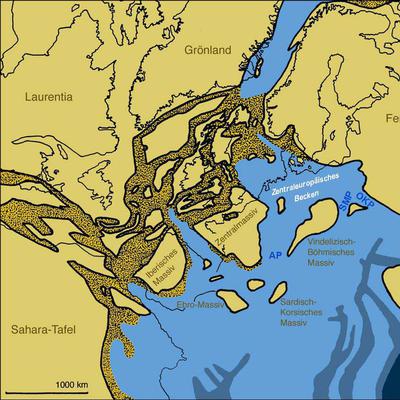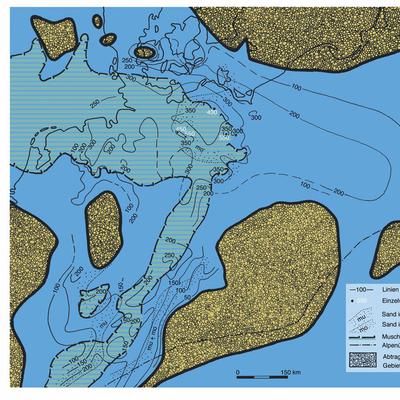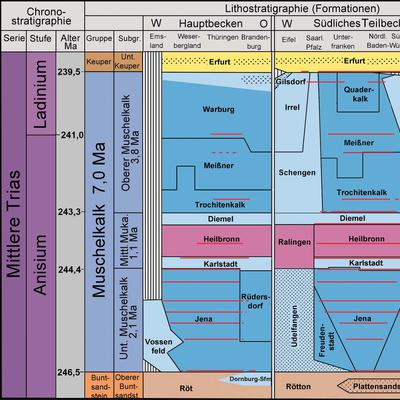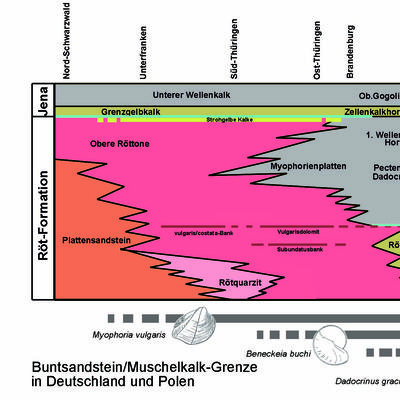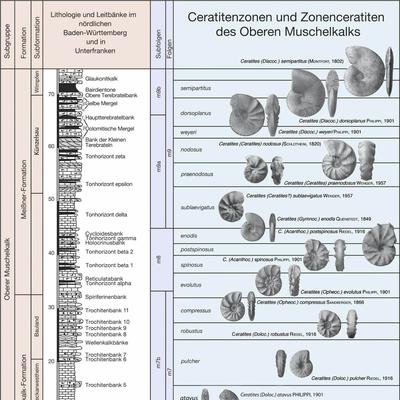In 1834 Friedrich von Alberti united the Buntsandstein (Bunter), the Muschelkalk, and the Keuper as Trias-Formation (Triassic Formation). The term Muschelkalk as a stratigraphic unit was already coined in 1761 by Georg Christian Füchsel from Rudolstadt in Thuringia. Today, radiometric data suggest the onset of the Triassic ca. 251 millions and its end 200 millions ago. The Triassic is now to be understood as a period of earth history that initiated the Mesozoic Era after the end of the Permian. Buntsandstein, Muschelkalk und Keuper are lithostratigraphic groups of rock units that form the supergroup Germanic Triassic because this development of sedimentary rocks is confined to Central Europe.
The Muschelkalk represents the marine part of the Middle Triassic, when vast areas of Central Europe were flooded for seven Million years by a shallow sea. While the global sea level was rising the Tethys Ocean was transgressing through various gateways over Central Europe. These marine straits allowed floras and faunas to immigrate into the Muschelkalk Sea and to persist as long as they tolerated the extreme subtropical and periodically hypersalinar conditions.
According to different rock types the Muschelkalk is subdivided into three subgroups, the Lower, Middle, and Upper Muschelkalk, which again are further subdivided into several formations and subformations (members). Index fossils are used for a detailed biostratigraphic zonation that allows a time correlation with contemporaneous rocks deposited in the Tethys, e.g. in the Alps. Most suitable index fossils are ammonoids, the shell characters of which underwent a rapid evolutionary change, additionally the tooth-like conodonts (minute jaw elements of extinct relatives of the vertebrates), some echinoderms, bivalves, and brachiopods. Pollen and spores are also useful biostratigraphic indicators that allow correlation of marine and terrestrial rocks.
A number of characteristic marker beds that can be traced over wide areas of the Central European Basin serve as additional lithostratigraphic tools. Reflecting short-time environmental changes, they act as time-markers and allow an additional very detailed subdivision of the Muschelkalk.
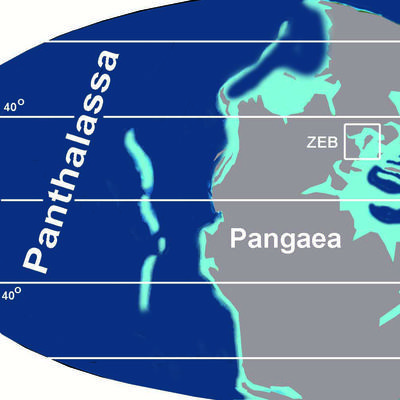
During the Triassic Period, the Central European Basin (ZEB) was situated in the subtropics at the western margin of the Tethys Ocean. It was influenced by monsoon climate. The continental areas were concentrated in the supercontinent Pangaea. Frequent hurricanes originating in the tropical Tethys reached Central Europe and left their traces on the floor of the Muschelkalk Sea as storm beds (tempestites).

